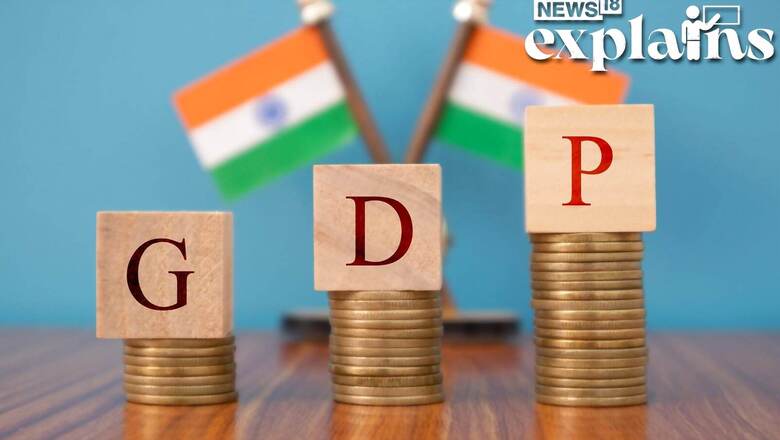
views
India’s economy is projected to slow to 6.5 per cent in the fiscal year starting April but will remain the fastest growing major economy in the world as it fared better in dealing with the extraordinary set of challenges the globe has faced, the Economic Survey 2022-23 said on Tuesday. LIVE Updates
In comparison to the predicted 7% growth in the current fiscal year (April 2022 to March 2023) and the 8.7% growth in the prior year, India’s GDP is expected to expand by 6.5% in 2023–2024.
“Like the rest of the world, India too faced an extraordinary set of challenges in tightening financial conditions and supply chain disruptions from a prolonged war in Europe but “withstood them better than most economies”, the annual document detailing the state of the economy said.
The survey tabled in Parliament by Finance Minister Nirmala Sitharaman, stated that India is the world’s third largest economy in PPP (purchasing power parity) terms and fifth largest in terms of exchange rate.
What is GDP?
The total monetary or market worth of all the finished goods and services produced within a nation’s boundaries during a certain time period is known as the gross domestic product (GDP).
It serves as a thorough assessment of the state of the economy in a particular nation because it is a wide indicator of total domestic production.
Even while GDP is frequently estimated on a yearly basis, it can also be calculated quarterly. For instance, the government of the United States produces an annualised GDP estimate for both the calendar year and each fiscal quarter. Each piece of data in this report is presented in real terms, which means that it has been adjusted for price changes and is therefore net of inflation.
- According to a report by Investopedia, it is the total monetary worth of all completed goods and services produced in a nation during a given time period.
- An estimate of a nation’s GDP can be used to determine the size and growth rate of an economy.
- Spending, output, and income can all be used to compute GDP, which can then be adjusted for population and inflation to give more detailed results.
- While nominal GDP ignores the consequences of inflation, real GDP does not.
- Although it has its limits, GDP is an important tool for assisting businesses, investors, and policymakers in making strategic decisions, the report says.
Types of GDP
The GDP types are as follows:
- Nominal GDP: Also referred to as nominal gross domestic product, nominal GDP measures GDP using current market prices to determine the value of all final products and services. When calculating GDP, nominal GDP takes into account variables including inflation, price fluctuations, fluctuating interest rates, and money supply.
- Real GDP: The worth of all products and services determined in an economy after taking the rate of inflation into account is referred to as real GDP.
In other terms, it is sometimes referred to as inflation adjusted gross domestic product and measures the value of goods and services generated in an economy over a year, adjusted for inflation.
In addition to inflation, real GDP also considers deflation. As a result, Real GDP is a more accurate indicator of the state of the economy than other indicators like Nominal GDP (which measures total output based on the prices).
Significance of GDP
Globally, economists employ a variety of metrics to gauge an economy’s growth, with GDP being regarded as the most significant. It takes into account the nation’s annual total production.
It acts as a significant determinant of how the economy develops and a crucial metric for gauging an economy’s performance.
What the Economic Survey Has Said:
– It has pegged the FY24 GDP growth at 6-6.8%
– Pegged FY24 base-line real GDP growth at 6.5%
– Pegged FY24 base-line nominal GDP growth at 11%
– FY23 GDP growth seen at 7%
The Pandemic Factor
- Due to several advantages India has over other countries amid the economic disruption brought on by the COVID-19 pandemic, the government believes India’s GDP growth in the 6–6.8% range, which is still less than the 7–% predicted for the current fiscal, would be doable.
- The present Covid increase in China has had little impact on the rest of the world’s health and economy, leaving supply chains intact in many countries, including India, according to the Economic Survey, which made the forecast.
- The Economic Survey predicted that while Western nations experience “recessionary tendencies” and India’s inflation rate stays below 6%, more money will likely flow into the country. According to the official poll that evaluates how the economy performed over the past year, this will result in “an improvement in animal spirits” and boost private sector investment.
Read all the Latest Explainers here


















Comments
0 comment